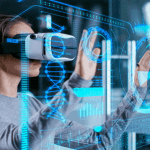
Apple has started working on Apple AR for some time now but the project is currently offering more challenges, better working conditions, and greater salaries, for special effects artists than Hollywood studios.
Apple is now focused on nicking “Special Effects Artists’ From Hollywood Studios to make its dream come true after working on Apple AR Project. While Augmented Reality, Virtual Reality, and combined Mixed Reality, are really waiting on devices like “Apple Glass” before they can become mainstream, they are already proving to be compelling career moves. Special effects artists and technicians are reportedly leaving Hollywood and the whole film industry in order to join technology firms like Apple and Google.
“The difference is, in tech, you are broadly treated more like a human being,” an unnamed artist told the Wall Street Journal. Described as a veteran visual effects artist who has recently quit Hollywood, he’s developing AR platforms.
The Wall Street Journal names Hao Li, a former head of the University of Southern California’s Institute for Creative Technologies, whose work has been bought by Apple. Li’s facial-tracking technology has been used as the basis of Animoji, and while he has not joined Apple, reportedly some of his colleagues have.
Similarly, around 2016, Google hired another USC head, Paul Debevec, followed by three of his team. “A lot of the most talented individuals that I’ve met through the visual effects industry find their way into the tech industry,” he told the Wall Street Journal. Three of Mr. Debevec’s USC team subsequently joined him at Google.
While Debevec is now a professor at the university, during his time at Google, he worked specifically on systems for digital scanning of faces and heads. Called the Light Stage, it’s a spherical device with 14,000 lights and in excess of 40 cameras.
This is the system used to create digital scans of actors, including Will Smith in “Gemini Man,” and Brad Pitt in “The Curious Case of Benjamin Button.”
More recently, Google has built a larger Light Stage which is capable of scanning an entire body. Debevec continues to be associated with the project, working to create digital humans for AR and VR. Apart from the new emerging challenges in AR technology, companies are now investing even more than Hollywood in order to attract talent that could shape the future of the AR and VR world. According to WSJ, One estimate by Accenture PLC is that AR/VR projects spending of $21 billion in 2020 could see a 100% increase in the coming years rising to $121 billion by 2023.
Research Snipers is currently covering all technology news including Google, Apple, Android, Xiaomi, Huawei, Samsung News, and More. Research Snipers has decade of experience in breaking technology news, covering latest trends in tech news, and recent developments.